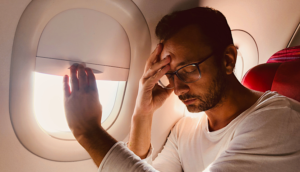Gearing up for a long-haul flight? What better way to pass the time than to catch up on some much-needed shut-eye? Except when you can't.
While there are some travelers blessed with the talent to fall asleep riding a rollercoaster at Six Flags, most of us aren’t so lucky. From seatmates who can’t stay still to IFE screens strobing like the dance floor at the Roxy, there can be an array of obstacles keeping you from entering dreamland while onboard a Dreamliner. Here are eight of the most common mistakes preventing passengers from falling sound asleep when flying and tips to ward off exiting planes exhausted upon arrival.
Boozing Before Snoozing
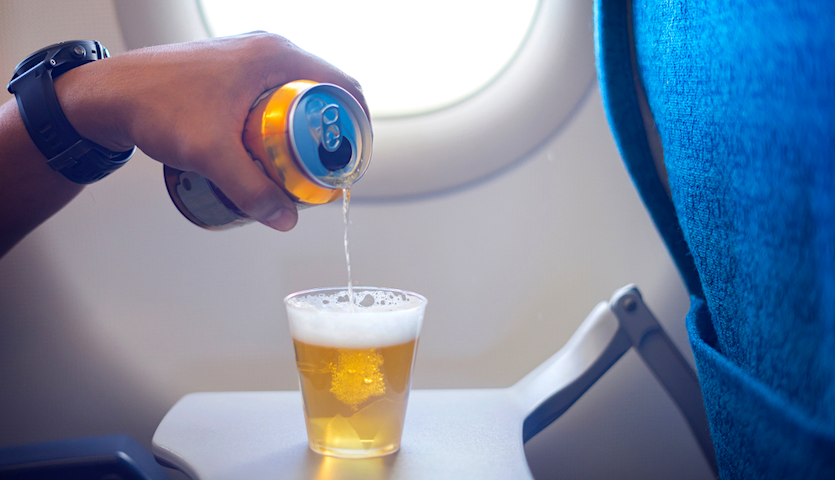
Sure that second or third glass of Pinot Noir might make nodding off after departure a little easier, but if quality sleep is what you’re after, you might want to stay off the sauce. The drowsiness caused by most alcohol may seem like helpful sleep-aid at first, but many studies show that a nightcap onboard contributes to dehydration, grogginess, and an interrupted REM sleep cycle.
To further disrupt your sleeping patterns, cabin pressure combined with an extra round can lead to a bloated feeling and require you to relieve yourself more often, reducing prime sleeping time.
Caffeine High
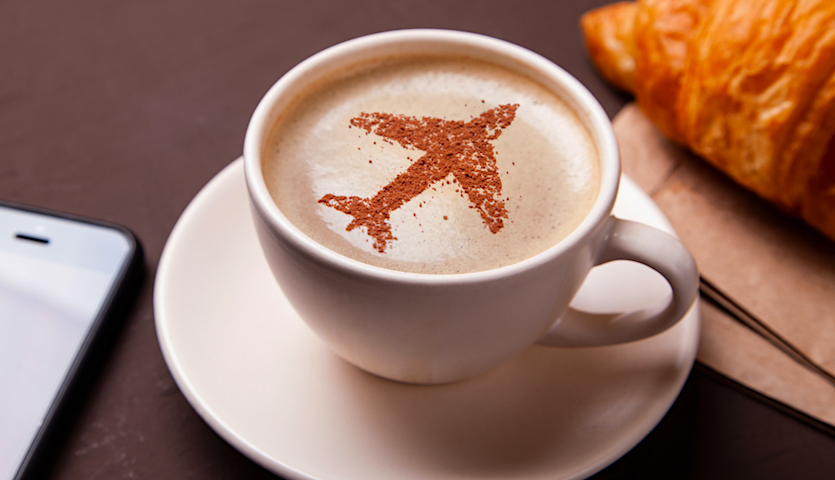
Dread the word decaf? You might want to add it to everyday vernacular when it’s time to fly. Skip your regular Starbucks order before boarding, and you’ll have an easier time getting shut-eye onboard without the caffeine buzzing through your body.
When the drink service comes down the aisle opt for some water or a caffeine-free beverage that won’t give you a sugar surge either. So that means, say no to the Coca-Cola (and with the results of this recent study on airplane water, you’ll probably consider giving up the onboard tea and coffee cold turkey too).
Stuck in the Wrong Seat
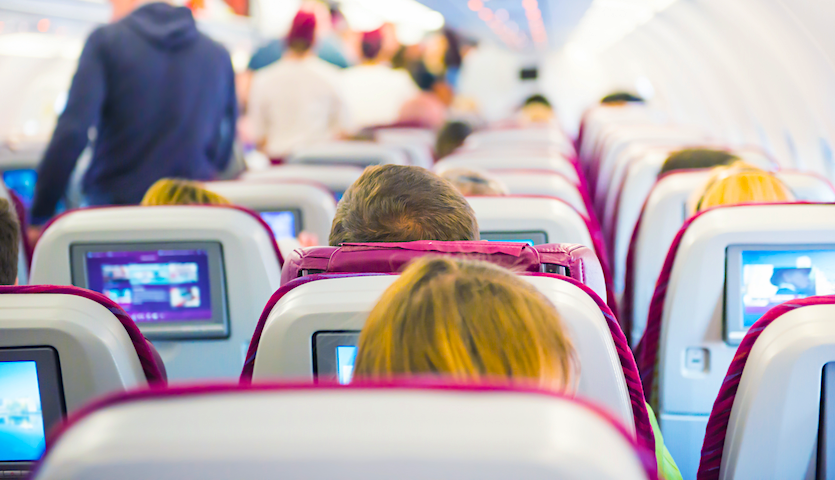
Unless you’re flying on Japan Airlines, odds are you won’t have a handy map to show you if there’s a baby nearby that might prevent you from catching some much needed Zzz’s. Barring being unluckily stuck beside a crying child, there are a few simple steps you can take to stake out a seat that’s better for sleeping. First and foremost, snagging a window seat will be your best plan of attack; you’ll control the window shade (for the most part) and won’t have to get up mid-slumber to allow fellow seatmates access to the aisle. Also, it’s the only spot that enables you to lean up against the side of the plane to better prop up a pillow for comfort.
Another issue that might hinder any hopes you have on snoozing is getting seated in a section near the lavatory or a non-reclinable seat. Usually located in the back, exit-rows, or near the middle-galley section on larger aircraft, these are high traffic areas, and often in earshot of the jarring vacuum-flush that would wake Rip Van Winkle. To avoid getting stuck in a stinky seat when flying, consider booking a non-basic economy ticket, check-in online as soon seats become available, or pony up and pay for a prime position that will allow for maximum rest. For tips on how to get the best seat on a plane, check out our guide here.
Related: How to Choose the Best Seat on a Plane
Not Dressing the Part
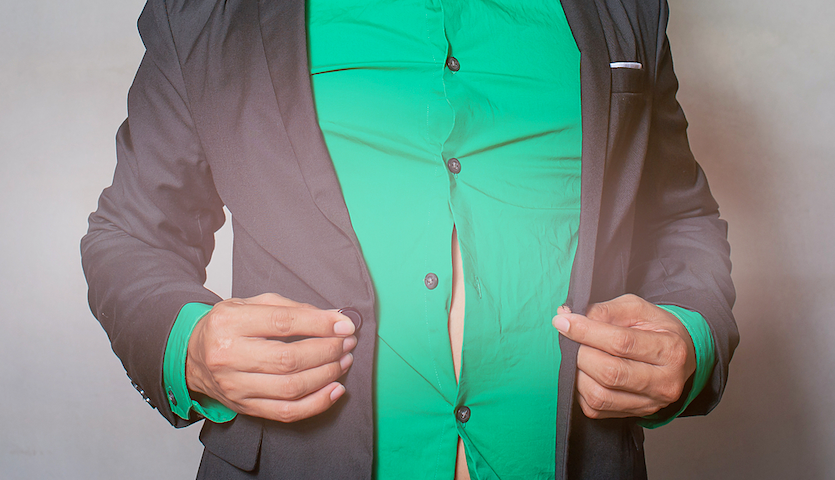
I'm not advocating for passengers to show up to the airport sporting fuzzy bunny slippers and matching PJs, but wearing something comfortable onboard is a key component to catch a catnap at cruising altitude. While our sister site SmarterTravel has a solid list of Things Not to Wear on a Plane, ultimately selecting something with stretchy material will best suit your sleeping needs.
It’s highly unlikely to get some decent shut-eye if you’re physically uncomfortable, so make sure to leave that shirt that feels like a straight-jacket at home. Those knee-high lace-up boots might be nice on 5th Avenue, not so much crammed in 55E. Less restrictive and looser items should be part of your go-to travel outfit with a focus on elasticity. Wearing several layers will help in coping with varying temperatures onboard the aircraft and can double as a pillow when needed. While taking off your shoes inflight is a debated topic, it may aid in both comfort and circulation. But, please remember to lace them back up if a trip to the toilet arises – for everyone’s sake.
Be Aware of Glare
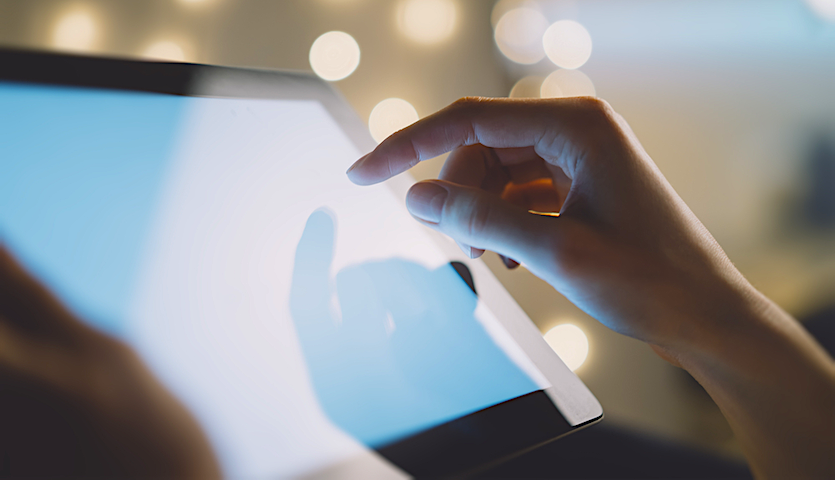
Here’s a simple equation: too much screen time subtracts from your sleep time. Excessive screen time suppresses the sleep-regulating hormone melatonin – toying with your ability to conk out onboard. And the blueish hue given off by tablets, phones, and laptops is the number one culprit tricking your internal sleep clock. Coupled with more airlines adding inflight entertainment streamed over electronic devices, glare might be the reason you’re getting fewer hours fast asleep – beyond the Netflix binges already keeping you awake.
It’s not only your own device at blame, flyers trying to catch forty winks while a movie is playing on seatback monitor can be woken by quick flashes or reading and cabin lights flickering off-and-on. Luckily this problem is easily fixed with an eye mask, turning the IFE off, and limiting the time spent hovering over your handheld device.
Prop Yourself Up
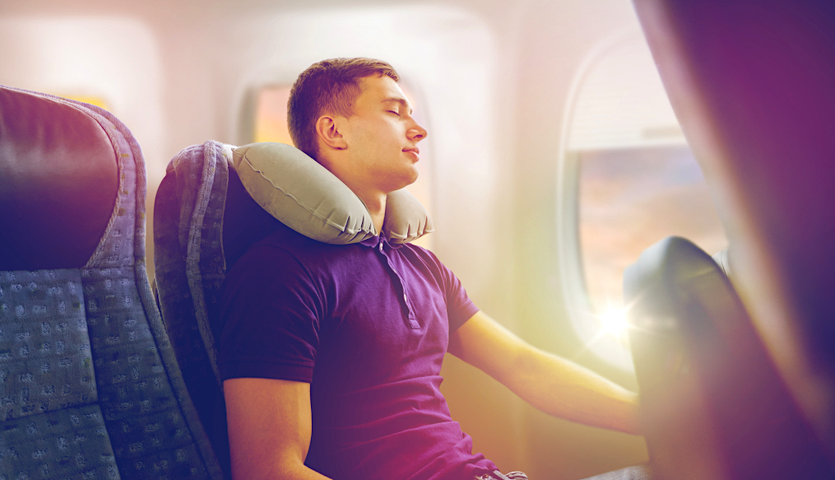
Whoever coined the phrase “pain in the neck” must’ve been a frequent flyer. For those travelers who balk at the idea of carrying around any extra items, you may have been overlooking the advancements made in neck pillows. Now available in nearly every shape and size, there’s a pillow out there for side sleepers, tray splayers, and those looking for support in all directions.
If you're lucky enough to be on a flight with a heap of empty seats, once that cabin door closes, look for a spot where you can comfily spread out. And don't forget to double-check with the cabin member that it's okay to move because many airlines cordon off select sections for crew usage. If you’re in a primo spot already, snag the surrounding extra pillows and blankets (don’t be greedy and grab anyone else’s) and construct a nest to swaddle up for a more comfortable sleep experience.
Put in the Preparation
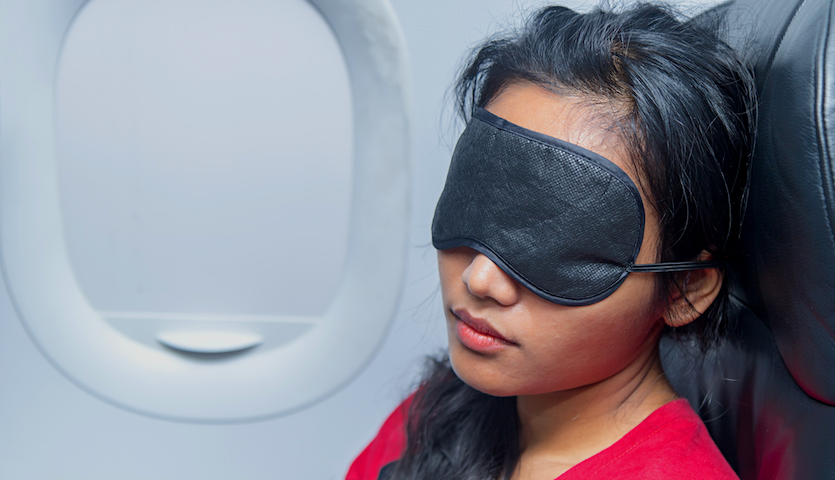
Days before departure, if possible, start shifting your sleep patterns at home to prepare for your upcoming trip. Wake up earlier than usual the morning of an overnight flight so you'll be feeling the flop-eye just after takeoff. If done properly, these time adjustments tweaks can also minimize the effect of jetlag.
If you value your sleep over the tinfoil tray of mushy macaroni served during dinner, notify the flight attendant that you'll be skipping meal service beforehand so you won't get tapped awake up when the cart comes around. Similarly, several international airlines now offer stickers or eye masks labeled akin to “Do Not Disturb” signs hung from hotel doorknobs to alert attendants to move along.
Another helpful hack is to order a special meal when booking. These often get served before the regular meal service, so you can dig into your dinner first and get a headstart on your hibernation instead of waiting for the trolley to make its rounds. If you prefer to eat before flying, be sensible and maybe skip overly spicy dishes or that extra lap around the buffet.
A surefire way to better prepare your probability of hitting the hay at 35,000 feet is to pack the proper essentials. Build yourself a sleep-kit with the right equipment like earplugs, a sleep mask, or some noise-cancelling headphones to help doze off minutes after departure. Here’s a list of some of our top choices to stock up on.
Best Items for Sleeping on Airplanes:
- Earplugs
- Eye mask
- Neck pillow
- Travel blanket
- Noise-canceling headphones
- Compression socks
- Natural sleep aid
- Scarf
Your Timing is Off
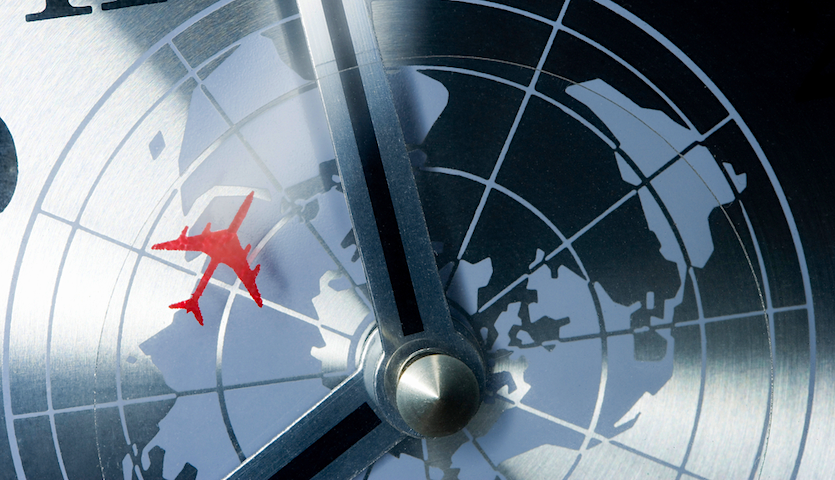
As the proverb goes: “timing is everything," and that holds true when flying. It may seem simple enough, but travelers seeking slumber inflight should double-check their trip's departure times before booking. If your itinerary calls for a stopover, try to have one segment with a long-haul leg giving you ample time to snooze. An international flight with a 7-hour flight followed by a 2-hour short hop is a much better option for overall sleeping conditions than two back-to-back 4.5 hours flights.
Don't let the red-eye moniker scare you off. Aim for long-haul overnight flights if heading eastward and avoid long-haul morning trips flying westward since you'll be tracking alongside the sun for most of your flight path. Arriving at your departure gate already bleary-eyed is the best plan of action, try for takeoffs just before bedtime or in the early morning hours when you’re at top tiredness. It might seem miserable at the time, but your odds of keeping your eyes open during the flight will drastically drop. As for handling jetlag on the other side, our readers have a solution for that.
